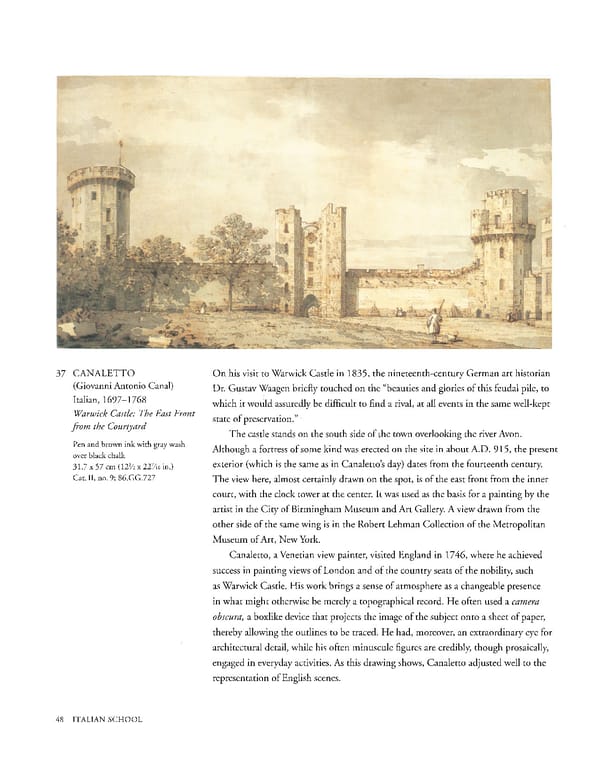37 CANALETTO On his visit to Warwick Castle in 1835, the nineteenthcentury German art historian (Giovanni Antonio Canal) Dr. Gustav Waagen briefly touched on the "beauties and glories of this feudal pile, to Italian, 16971768 which it would assuredly be difficult to find a rival, at all events in the same wellkept Warwick Castle: The East Front state of preservation." from the Courtyard The castle stands on the south side of the town overlooking the river Avon. Pen and brown ink with gray wash Although a fortress of some kind was erected on the site in about A.D. 915, the present over black chalk 31.7 x 57 cm (12½ x 22 7/16 in.) exterior (which is the same as in Canaletto's day) dates from the fourteenth century. Cat. II, no. 9; 86.GG.727 The view here, almost certainly drawn on the spot, is of the east front from the inner court, with the clock tower at the center. It was used as the basis for a painting by the artist in the City of Birmingham Museum and Art Gallery. A view drawn from the other side of the same wing is in the Robert Lehman Collection of the Metropolitan Museum of Art, New York. Canaletto, a Venetian view painter, visited England in 1746, where he achieved success in painting views of London and of the country seats of the nobility, such as Warwick Castle. His work brings a sense of atmosphere as a changeable presence in what might otherwise be merely a topographical record. He often used a camera obscura, a boxlike device that projects the image of the subject onto a sheet of paper, thereby allowing the outlines to be traced. He had, moreover, an extraordinary eye for architectural detail, while his often minuscule figures are credibly, though prosaically, engaged in everyday activities. As this drawing shows, Canaletto adjusted well to the representation of English scenes. 48 ITALIAN SCHOOL
 Masterpieces of the Getty Museum: Drawings Page 48 Page 50
Masterpieces of the Getty Museum: Drawings Page 48 Page 50